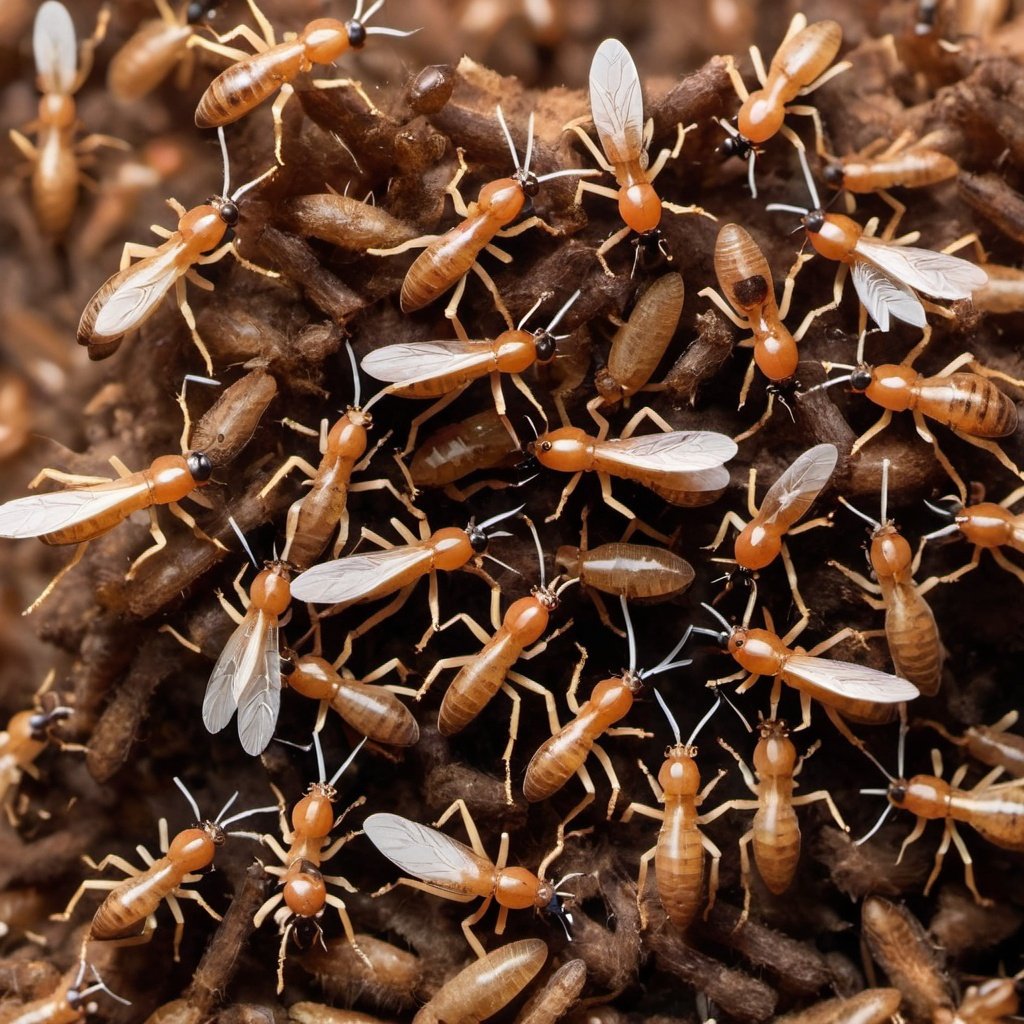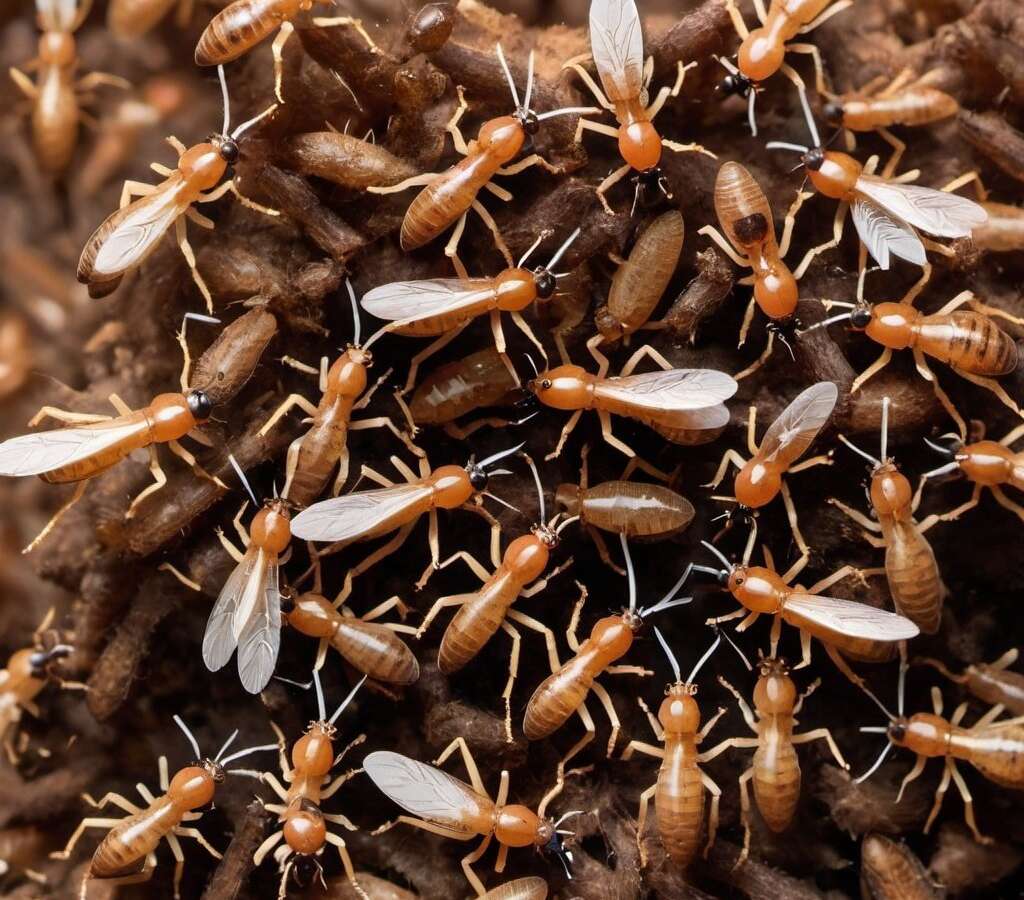In a few months, termite season will be upon us again. Even though we are not seeing swarmers yet, these pests are still active, quietly consuming homes around Oklahoma. Because of this, it is important to not only know the signs of termites, but to be able to identify them when they appear. Many people mistake termites for ants, and vice versa. Do termites look like ants? The two insects are similar in size and shape, but they can be distinguished from one another. Ants have pinched waists, where termites have bodies that are uniform in width.
Ants are actually predators of termites. Termites are very sensitive to drying out, so they must stay underground. They are usually more yellow in color. Ants have pinched waists, but termites have a uniform width to their bodies. If the insect has wings, termites will have four wings longer than their body, all the same length. Ants will also have four wings, but two wings will be larger than the others.
TERMITE SWARMERS
Most termites in Oklahoma are Eastern subterranean termites. As their name implies, they live underground. The only exception to that are what are known as swarmers. These swarmers are the reproductive individuals of the colony. These reproductives are the only ones that have wings and hardened bodies that can survive the dryness of the open air. They are also known as alates.
Once a year, from late spring to early summer, termite colonies will release their alates into the open air. These male and female reproductives will gather into large swarms, each searching for a mate. Once a male and female find each other and mate, they will find a suitable place to start a colony. After finding the place and landing, their wings will fall off. They will dig out a royal chamber underground, and the new queen will begin to lay eggs. Call your Oklahoma exterminator if you think you may have a problem or for more information.
DIVISION OF LABOR
The termite colony works much like any other hive insect, such as ants or bees. The queen is tasked with laying eggs. Worker termites forage for food, feed the young, soldiers, queen and reproductives. Since termites are so susceptible to drying out, they must build mud tubes to travel above ground. Workers are tasked with building these. They will build these tubes up wood structures and them eat away at the “floor” of the tube, or the exposed wood.
Soldier termites are tasked with protecting the colony from predators. They have large heads with powerful mandibles, and sometimes glands that can produce sprays of venom or sticky substances. The number one predator of termites are ants. If a predator such as ants enter the colony, the soldiers spring to life. They go straight into the fray, and usually sacrifice themselves. They will attack the antagonists, but their main purpose it to clog up the tube with their large head, buying time for worker ants to close off the tube behind them.
LIFE CYCLE
Termites follow an incomplete metamorphosis. These insects start as eggs laid by the queen. These eggs hatch into what’s known as a termite larva. These larva do not develop like most larva. Most larva pupate, and then emerge from their cocoon as an adult. Termite larva’s develop more like a nymph. They will molt a series of times, each time growing and looking more like an adult termite.
Termites vary their development by their caste. A worker will start as an egg, hatch as a termite larva, and then develop into a worker termite. This is the simplest path. Some of these workers will further develop into soldiers. Reproductives start as an egg, hatch into a termite larva, then become nymphs that will either become a supplemental reproductive in the colony, or an alate. A supplemental reproductive will replace a king or queen when they die, or possibly aid in egg bearing or fertilization. An alate is tasked with flying from the colony and creating a new colony.
SIGNS OF TERMITE INFESTATION
If you suspect a termite infestation, then it is best to contact your experienced Oklahoma pest control company for help. A good termite inspection will search inside your home, in any crawlspace under your home, and in the attic. They are looking for definite signs of termite infestation. One of the biggest, and most obvious signs are the presence of mud tubes. These tubes carry termites above the surface. When they are found, action should be taken immediately.
Other signs of infestation are small holes or gaps in the drywall trim. Trim is often made of wood, and termites will feed on the paper on drywall as well. Small holes left in wood beams can also be a clue. Termites will open up holes in their galleys to allow them to push refuse out of. If you see any of these signs, contact a Tulsa exterminator as soon as possible.
DEALING WITH TERMITE PROBLEMS
As stated above, if you think that you are having any issues with termites in your home or business, then it is definitely time to contact a professional Tulsa pest control company for an inspection. An experienced termite technician can identify damage and get it repaired for you quickly. Contact TermMax Pest Control for a free estimate. We service the greater Tulsa area, including Tulsa, Jenks, Bixby, Claremore, Owasso, Coweta, Catoosa, Sand Springs, Pratville, Sapulpa, Broken Arrow, Turley and much more. Call us today! We’re here to help!




